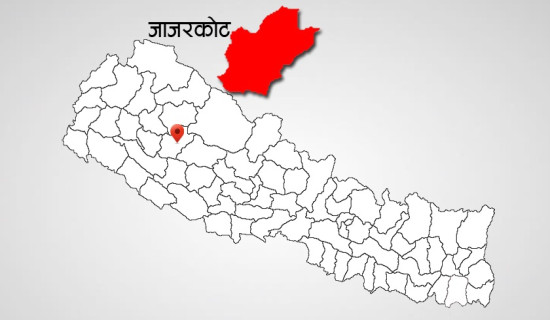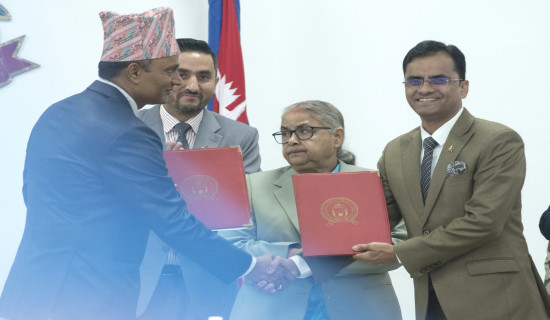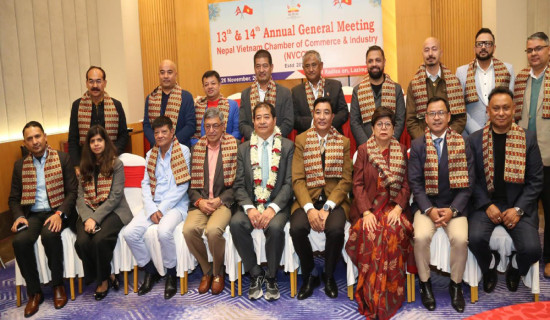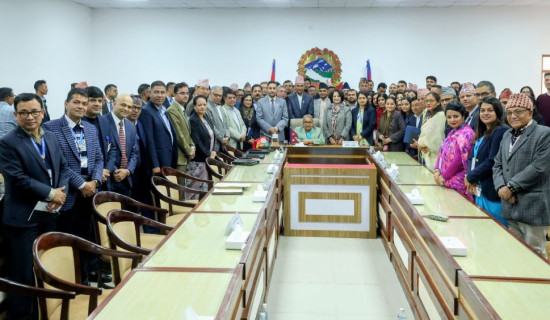- Thursday, 27 November 2025
Anti-cervical Cancer Drive
As cervical cancer is one of the major causes of death among women worldwide, its prevention is essential. Cervical cancer is the fourth most common cancer among girls and women globally, according to the World Health Organisation (WHO). In 2020, as many as 604,000 new cases and 342,000 deaths were recorded worldwide. Women in the low and middle income countries are more vulnerable to this disease than others, with nearly 90 per cent of the new cases and deaths reported during that year. Two human papillomavirus (HPV) types are responsible for about 50 per cent of high grade cervical pre-cancers. Sexual contact is the main cause through which HPV is transmitted from one person to another. Women living with HIV are at higher risk of developing cervical cancer than others. This disease is the major cause of deaths among women in Nepal, too. Hundreds of new cases of cervical cancer are detected across the nation every year.
Although no thorough study has so far been carried out in order to find out the exact number of cases related to cervical cancer in Nepal, hundreds of people are believed to have been found suffering from this disease every year. Reports show that more than 700 women suffering from cervical cancer visit the BP Koirala Memorial Cancer Hospital based in Bharatpur alone annually. Many other patients visit different parts of India and other countries for the treatment of this illness. Cervical cancer can be cured if it is diagnosed at an early stage and treated on time. It takes 15-20 years for cervical cancer to develop in women with normal immune systems. Considering this, the government has launched a free HPV vaccination campaign across Nepal as immunisation against HPV and screening and treatment of pre-cancer lesions is a cost-effective method to prevent this disease.
Vaccination against HPV is a coordinated and comprehensive strategy to prevent cervical cancer and other diseases caused by the virus. Screening and treatment of pre-cancerous lesions, diagnosis and treatment of invasive cervical cancer and palliative care include other steps towards controlling this disease. Under its inoculation drive against HPV, the government is vaccinating girls between 9 and 15 years in all the seven provinces nationwide. As per the Immunisation Section at the Family Welfare Division under the Department of Health Services, the vaccines are being administered at Koshi Hospital in Koshi Province, Narayani Hospital in Madhesh Province, Paropakar Maternity Hospital in Bagmati Province, Pokhara Hospital in Gandaki Province, Bheri Hospital in Lumbini Province, Surkhet Provincial Hospital in Karnali Province and Dadeldhura Hospital in Sudurpaschim Province.
Each girl needs to be administered two doses of the vaccine over a period of six months. Minister for Health and Population Mohan Bahadur Basnet launched vaccination campaign at a programme organised at Paropakar Maternity Hospital in Kathmandu on Wednesday. The government purchased 20,000 doses of HPV vaccine in the first week of July. It has allocated them proportionally on the basis of the size of the population. Since the number of the target population stands at 1.7 million, the government needs to buy additional doses of vaccine in order to make the immunisation a success. For now, the vaccines are being made available on a first-come-first-serve basis. This is a good initiative on the part of the government to contribute towards preventing cervical cancer. However, the MoHP plans to import the required quantity of HPV vaccines within a year in order to keep the vaccination drive going.
















